Gritsai Maria
Faculty of Engineering and Economics Department of Management and Economic LawSpecialty "Management of organizations"
Personnel development management at the enterprise
Supervisor: Candidate of Economic Sciences, Associate Professor Romanyuk Natalia
Abstract on the topic of graduation work
Content
- 1. Introduction
- 2. Relevance of the topic
- 3. Purpose of the study
- 4. THEORETICAL FOUNDATIONS OF PERSONNEL DEVELOPMENT MANAGEMENT IN THE ENTERPRISE
- 4.1 Development of the personnel of the enterprise as the basis for the efficiency of the economy
- 4.2 Personnel training system in the organization
- 4.3 Traditional and innovative methods of personnel training
- Findings
- List of sources
Introduction
In modern economic conditions, the efficiency of business entities directly depends on personnel potential, qualifications of employees, effectiveness of personnel management and personnel policy organizations. Personnel is an integral part of any organization, since only it is the basis production. The successful operation of any enterprise is ensured by qualified personnel who have passed preliminary vocational training and having education, work skills, work experience in the chosen field of activity.
Relevance of the topic
Improving their professional qualities, gaining new skills and knowledge, employees turn into more competitive in the labor market and acquire new opportunities for professional growth, both among employees within the organization and outside of it. In addition, vocational training contributes in the overall intellectual development of the individual, increases his erudition and increases the social circle, strengthens self confidence.
The quality of the products or services provided depends on the knowledge, skills and abilities of the personnel, and, hence the success of the entire business. It is important to pay attention to the training and development of personnel, as one of the key systems to achieve the goals of the organization. When planning staff training and development it is necessary to pay great attention not only to the goals, deadlines and expected result, but also to the methods that will be be applied, since the success of the entire personnel development system largely depends on them.
Purpose of the study
The aim of the study is a theoretical review of the literature, as well as an analysis of the concepts, methods and stages conducting professional training of personnel in the metallurgical industry and the success of implementation in practice systems data.
4. THEORETICAL FOUNDATIONS OF PERSONNEL DEVELOPMENT MANAGEMENT IN THE ENTERPRISE
4.1 Development of the personnel of the enterprise as the basis for the efficiency of the economy
Personnel management is one of the key areas in the strategy of a modern enterprise. Since the role of a person increases in the circumstances of modern production, to his capabilities, level of knowledge and qualifications are increasingly demanding. [2]
The problem of personnel management in organizations is being developed by foreign and domestic scientists who made an important contribution to the development of the problem of the effectiveness of personnel management in large companies. Consider more in detail the concept of "personnel management". In the scientific literature, there are many interpretations of the concept of "management personnel” (table 1.1).
Table 1.1 - Interpretation of the concept of "personnel management" by various authors
| Author | Definition |
| Kibanova A. [1] | Personnel management is the formation and direction of the employee's motivational attitudes in accordance with with the challenges facing the organization. |
| Krushelnitskaya O., Melnichuk D. [1] | Human resource management is an ordered set of interrelated elements that differ functional goals, act autonomously, but are aimed at achieving a common goal. |
| Genkin B., Balabanova L., Sardak O. [1] | Personnel management is a set of goals, objectives and main activities, as well as various types, methods and appropriate management mechanism aimed at improving productivity labor and quality of work. |
| Shekshnya S.[1] | Personnel management is the provision of the organization with the necessary number of employees who perform the required production functions. The effectiveness of personnel management is determined by the degree of implementation of general organization goals. |
| Marr R., Fliaster A.[1] | Personnel management is an area of activity, the most important elements of which are the definition needs, attraction, introduction to work, development, controlling, release of personnel, as well as work structuring, remuneration and social services policy, personnel cost management and employee management. |
| Borisov A. [1] | Personnel management is a set of measures for working with personnel aimed at achieving the goal enterprises through purposeful work with employees of the enterprise. |
Based on Table 1.1, we can conclude that the most general definition of "personnel management" was given by Marr R., Fliaster A, they revealed the whole essence and presented all the components of this process.
The personnel management system is aimed at the distribution of personnel according to psychological, professional characteristics. Consider the main components of the personnel management mechanism, fig. 1.1.
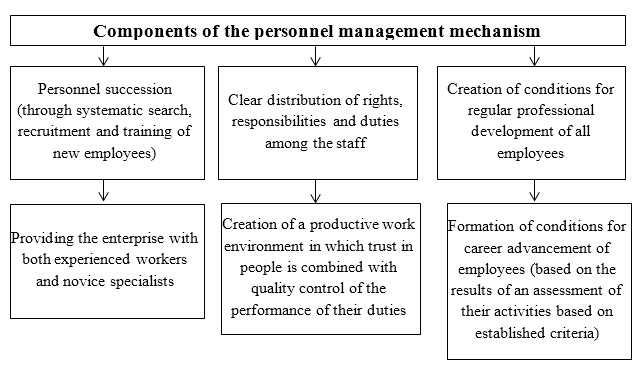
Figure 1.1 - Components of the personnel management mechanism
In conditions of financial constraints, many enterprises use outdated personnel management mechanisms, due to which there was an unfavorable situation with personnel:
1. Employees do not identify with the company and position. They are not satisfied with the work and the result, are indifferent to completing tasks, but "internal firing" does not encourage them to look for a new job or sphere of activity, leads to pessimism, which negatively affects labor productivity.
2. Personnel management is bureaucratic, secondary work takes a lot of time and effort, which leads to to distrust and weakening the creative approach to work.
3. There is no goal orientation, because most employees view their work in terms of entrepreneurship.
4. Existing personnel management mechanisms are not identified with abilities, knowledge, skills and abilities employees, which removes the staff from achieving high results and applying a creative approach to company's work activities.
5. The work of personnel is less effective due to the limited freedom of action of employees, lack of flexibility, adaptability of the personnel management mechanism to the constantly changing external environment.
6. Lack of team spirit reduces productivity in the team. [4]
In the conditions of economic restrictions, the tasks are relevant, which are presented in the form of the following scheme, fig. 1.2.
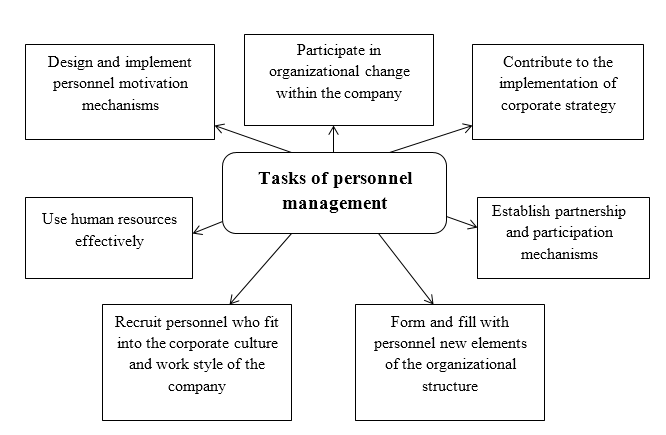
Figure 1.2 - Tasks of personnel management
From fig. 1.3 we can conclude that the manager's task is to find the most promising and suitable for the company an employee who has the necessary experience, corresponding to the current qualification requirements, who is able to adapt to economic constraints. One of the key tasks in personnel management is the formation of adaptation mechanisms among employees that allow them to quickly adapt to new requirements and continue to perform their functions with maximum efficiency. [3]
Personnel management is based on such assumptions as the need for a close connection of planning personnel with an enterprise development strategy, a quantitative assessment of the costs of working with personnel and their impact on the economic indicators of production, as well as material and moral incentives as the basis effective personnel management. The concept of personnel management is a system of theoretical and methodological views on the understanding and definition of the essence, content, goals, objectives, criteria, principles and methods personnel management, as well as organizational and practical approaches to the formation of a mechanism for its implementation in specific conditions of the functioning of the organization. The management concept is shown in fig. 1.3.
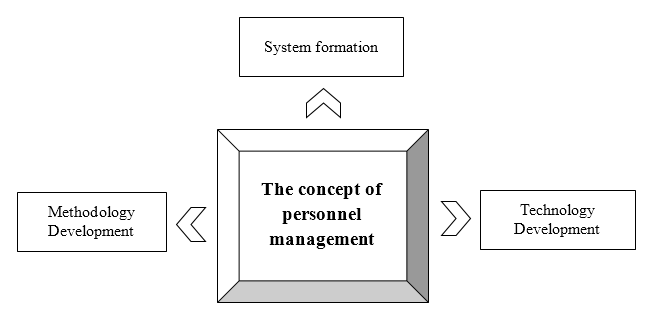
Figure 1.3 - . The concept of personnel management
Most modern companies from completely different areas of activity strive for training and development its personnel, this applies to all types of personnel training: both in-house and with using external sources. In any modern organization, personnel plays a major role, because without qualified personnel, the organization can not achieve its goals.[5]
4.2 Personnel training system in the organization
At the present stage, the most urgent problem of economic development is the lack of qualified frames. One of the key reasons for this situation is the fact that most modern organizations do not pays due attention to a set of measures related to the development of its staff. It is worth noting that personnel development of an organization is a systematic and purposeful process of training personnel for performing new production and organizational functions and solving previously unknown tasks, as well as taking up new positions. The main goals of personnel development are: increasing the potential of employees for performing tasks in the interests of the organization; reducing employee turnover, as well as increasing productivity and labor efficiency. In general, it should be noted that the personnel development system includes the following elements, fig. 1.4.
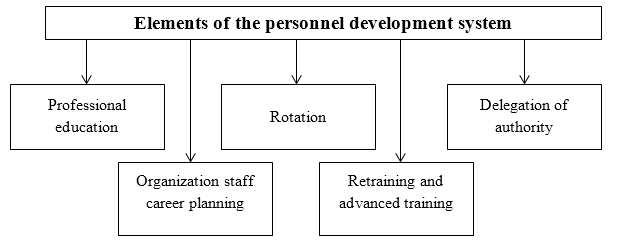
Figure 1.4 - Elements of the personnel development system
The main element and the most important link in the development of the organization's personnel is training. In order to the company employed competitive staff, it is necessary to correctly set the learning objectives, i.e. that desired the result that can be achieved if employees are provided with the knowledge, skills and abilities that they will necessary for effective work, to maintain their professional level.[7]
Managing the training of subordinates is one of the activities of managers (managers). The organization of the personnel training process is based on a training model consisting of cycles typical for design work, but modified to the learning process, applicable as a basic platform for work both employees in the field of education in general and managers (managers) Personnel training model organization provides for the implementation of work on the following main stages, fig. 1.5.
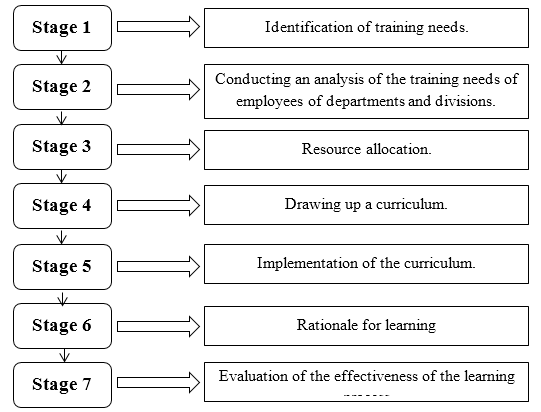
Figure 1.5 - The main stages of personnel training in the organization
Learning is a complex process, as new approaches must be found in the learning process solving managerial problems, increasing labor productivity, the quality of performance of production tasks, high requirements for personnel compliance, building a system of priorities for the development of the entire company and individual divisions. Management has an important and decisive function, defining behavioral patterns and work approaches. leaders at various levels.
Summing up, we can say that staff training is becoming more and more in demand and relevant over time. An effectively built system of training the company's personnel is an important link in ensuring sustainable economic growth, especially during periods of significant innovation change or long-term economic crisis on a global scale. A well-organized personnel training system gives the company a competitive edge. advantage in the market, due to continuous improvement and updating of knowledge of employees. [10]
4.3 Traditional and innovative methods of personnel training
As for the methods of personnel training, there are currently many of them. Let's single out the most frequently used. These methods include:
- active learning, which includes a group discussion of a particular issue, training, education modules, distance learning, etc.;
– vocational training, which includes direct on-the-job training, rotation, training, mentoring;
– informal learning, which includes learning in x-groups, storytelling, etc.
All methods should be combined into 2 groups: traditional and innovative. Lectures, seminars, mentoring, video courses are the most widely used and are among the traditional methods of staff training.
In connection with the development of information technology in recent decades, new interactive teaching methods. Innovative teaching methods are a new presentation of material and information, the main goal of which is solving exceptional problems. These methods are quite varied. The most widely used are forms of education: coaching, "Shadowing", "In-basket", Gamification, "Buddying", "Secondment".
Innovative training methods have the greatest impact on the development of skills and abilities of employees in their current activities. Through training, an employee can significantly improve the quality of their work. From point of view strategic development of the organization, teaching methods contribute to the development of the human potential of the individual, especially in the field of its innovative component. Methods such as gamification, case studies and "Secondment", stimulate the employee to creative work, search for non-standard solutions, develop the ability to act in conditions of risk and uncertainty. A modern organization is interested in the development of such competencies, since this ensures its long-term development in the market.[10]
Findings
In modern conditions, personnel management is becoming increasingly important for many organizations. This the trend is due to the fact that work in the modern market puts forward high requirements for the level of education personnel. Knowledge, skills and attitudes that were acquired in the past and helped to work successfully yesterday, today no longer matter. External conditions are changing very rapidly: state policy in the field of economy, legislation and tax system, new competitors appear, etc. Also changing the internal operating conditions of the organization: enterprise restructuring, technological changes, the emergence of new jobs, etc. Thus, most companies need to train their employees how to today as well as tomorrow's changes.
Personnel training is “a purposeful process of transferring and acquiring new knowledge and skills, implemented by the organization for its employees, with the aim of ensuring that they perform their best professional responsibilities".
In order for competitive personnel to work in a company, it is necessary to correctly set the learning objectives, i.e. that the desired result that can be achieved if employees are provided with the knowledge, skills and abilities that will be necessary for them to work effectively, to maintain their professional level. Staff training methods can be implemented at the workplace of the trained employee (within the organization) or outside it (outside the organization). companies, for example, in specialized educational institutions).
When developing staff training programs, it is necessary to actively introduce innovative methods, use all available technical capabilities and modernize its educational base. Development of labor potential employees is an important component of the success of the entire company, since it is the staff that produces products and provides services.
List of sources
1. Pozdnyakova, L. N. Analysis of organizational structures of personnel management of organizations and modern methods building personnel management systems // Bulletin of the Voronezh Institute of High Technologies. 2018. No. 2. [Electronic resource]. – Access mode: https://www.elibrary.ru/item.asp?id=18782252
2. Personnel management of the organization. Technologies of personnel development management: Textbook / T. M. Khramova, O. P. Khodenkova, O.K. Mineva [and others]. - Moscow: Limited Liability Company "Scientific Publishing INFRA-M Center. 2016. [Electronic resource]. – Access mode: https://www.elibrary.ru/item.asp?id=18782252
3. Dimitrieva S.D., Merzlyakova I.A. Theoretical approaches to the definition of the organization's personnel management system. Innovatsionnaya nauka. 2016. №6. [Electronic resource]. - Access mode: https://cyberleninka.ru/article/n/teoreticheskie-podhody-k-opredeleniyu-sistemy-upravleniya-personalom-organizatsii
4. Ilyinskaya E.M., Kirshina I.A. The concept of enterprise personnel management // Management and management. 2011. No. 4 (66). [Electronic resource]. - Access mode: https://cyberleninka.ru/article/n/kontseptsiya-upravleniya-personalom-predpriyatiya
5. Vukovich, G.G. The mechanism for ensuring the innovative development of the personnel management system // Kadrovy management. 2020. No. 7. [Electronic resource]. – Access mode: https://www.elibrary.ru/item.asp?id=42939606
6. Savitskaya, V.V. Theoretical aspects of the personnel training system // Personnel management and personnel policy. 2021. №5. [Electronic resource]. – Access mode: https://www.elibrary.ru/item.asp?id=27201892
7. Sharapova N.V., Unzhakova E.A. Professional training of personnel as a factor in the competitiveness of an organization // Problems of Economics and Management. 2018. No. 4 (68). [Electronic resource]. - Access mode: https://cyberleninka.ru/article/n/professionalnoe-training-personala-kak-faktor-konkurentosposobnosti-organizatsii
8. Karpukhin, M.Yu. Organization personnel training: essence, types // Agrarian Bulletin of the Urals. 2017. No. 01 (155). [Electronic resource]. - Access mode: https://cyberleninka.ru/article/n/obuchenie-personala-organizatsii-suschnost-vidy
9. Dmitriev M.E., Serezhkin A.M. Peculiarities of personnel training in an organization // Problems of personnel policy. 2019. No. 4. [Electronic resource]. - Access mode: https://cyberleninka.ru/article/n/osobennosti-obucheniya-personala-organizatsii
10. Kolesnichenko E. A., Ivanova E. Yu. Improvement of personnel training methods in an organization // Bulletin science and practice. 2018. Volume 4 No. 5. [Electronic resource]. - Access mode: https://cyberleninka.ru/article/n/sovershenstvovanie-metodov-obucheniya-personala-v-organizatsii
